1. Cheerleading as a Serious Sport
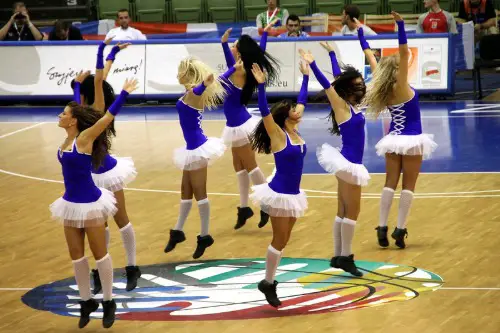
Only in the U.S. is cheerleading both a pep squad and a high-stakes competitive sport, according to Adrian Horton from The Guardian. While the athleticism is real—some routines are incredibly demanding—the cultural image is still steeped in cliché. Skimpy outfits, exaggerated pep, and the focus on popularity make it feel like a leftover from a teen movie. It’s often hard for outsiders—and even some Americans—to take it seriously.
Many schools and colleges pump serious money into cheer programs. Competitive cheer involves nationwide travel, intense training, and big sponsorships. But the campy, stereotyped image never really left. That disconnect leaves a lot of people cringing at how cheer is portrayed versus how it’s practiced.
2. Over-the-Top High School Proms
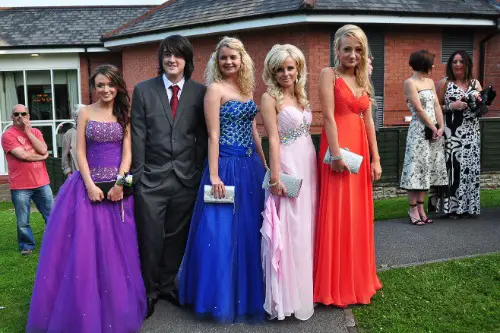
American high school proms are treated like mini royal weddings, according to Gaston La-Gaffe from FAD Magazine, complete with limos, gowns that cost hundreds of dollars, and Instagram-worthy photo shoots. While they’re meant to be fun milestones, the sheer extravagance can feel absurd, especially to families under financial strain. Students are often pressured to spend big on outfits, tickets, and even promposals—yes, that’s a real thing where teens stage elaborate invitations. It’s so overblown that many Americans joke they peaked in high school.
The tradition is rooted in 19th-century debutante balls but has evolved into a consumer frenzy. Some schools even rent out banquet halls or cruise ships for the event. There’s an unspoken competition around who can spend the most, which adds to the cringe factor. Even many adults look back at their prom experience and laugh at how seriously they took it.
3. Black Friday Mayhem

The day after Thanksgiving, Americans line up in the dark, sometimes for hours, just to stampede into stores for sales, according to Camille Fine from USA Today. It’s like a national sport, but instead of medals, you get discounted TVs and maybe a bruised rib. Videos of people fighting over toasters have gone viral for years, and many locals are embarrassed by the spectacle. It’s capitalism at its most chaotic.
Black Friday started in the 1950s in Philadelphia and took off nationwide in the ’80s and ’90s. Over time, it morphed from just big discounts to a frenzy that starts on Thanksgiving night. Despite online shopping becoming more popular, many stores still push these sales hard. Even people who participate often roll their eyes at how extreme it gets.
4. Obsessive Flag Displays
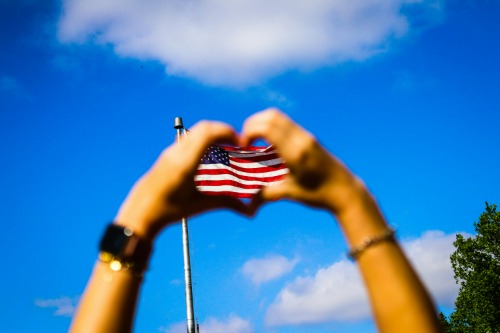
Americans love their flag—like, really love it, John Donovan from HowStuffWorks shares. It’s not uncommon to see homes with five or more flags, flag-themed clothing, and even flag decals on trucks. While patriotism is common worldwide, the U.S. version sometimes crosses into performative territory. Some locals feel it veers too close to nationalism and makes them uncomfortable.
The U.S. Flag Code actually discourages using the flag on apparel or for advertising, but those rules are mostly ignored. In some communities, not flying the flag can even lead to social pressure or suspicion. It’s reached a point where expressing patriotism modestly can feel like an act of rebellion. This tradition often leaves Americans torn between pride and embarrassment.
5. Super Bowl Commercial Worship
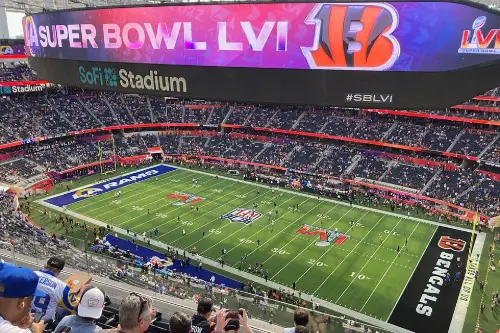
The Super Bowl is supposed to be about football, but let’s be real—it’s also about watching commercials. Entire parties are thrown where people barely watch the game and just comment on ads. Companies spend millions of dollars for a single 30-second spot, often trying too hard to be funny or emotional. It can feel a little absurd to elevate advertisements to cultural events.
What’s especially awkward is how brands try to outdo each other in being “relatable” or “woke,” usually missing the mark. For a country that complains about corporate influence, Americans really buy into it this one night a year. Even viewers who enjoy the spectacle often feel secondhand cringe when a commercial flops. And yes, people do rank the commercials like they’re Olympic events.
6. The Pledge of Allegiance in Schools
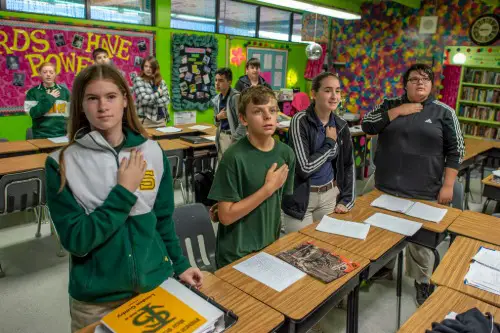
Every morning, millions of American kids stand up, put their hands over their hearts, and recite the Pledge of Allegiance. It’s so normal here that people rarely question how weird it looks from the outside. The pledge was originally written in 1892 and added “under God” during the Red Scare in the 1950s. For some, it feels more like indoctrination than patriotism, according to Nicholas Goldberg from The Los Angeles Times.
Plenty of students don’t even understand what they’re saying—they just mumble through it. Others feel uncomfortable, especially those from different religious or cultural backgrounds. In recent years, some kids have opted out entirely, which has sparked backlash. Many adults now admit they found the tradition bizarre even as children.
7. Tipping Culture

Americans tip for everything—meals, haircuts, coffee, even self-checkout kiosks now. While tipping originated as a way to reward good service, it’s become an unspoken rule that can feel more like a tax. Many locals feel awkward and resentful about the pressure, especially when companies use it to avoid paying livable wages. International visitors often find the system confusing, and honestly, so do a lot of Americans.
The expectation of 15-20% at restaurants is now standard, even if the service is subpar. And with tip screens popping up everywhere, people are being guilted into tipping for things they used to just pay for. It’s a broken system that shifts responsibility from employers to customers. Lots of Americans are vocal about hating it, even while still participating.
8. Extreme Gender Reveals
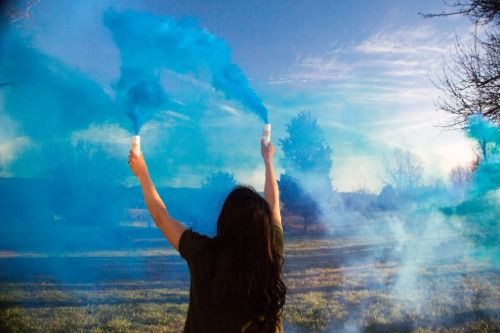
Gender reveal parties used to be a simple cake-cutting event—blue or pink inside, and done. Now they involve fireworks, explosions, even planes skywriting the baby’s sex. Some of these stunts have caused wildfires and injuries, making the whole tradition seem reckless. Many Americans now cringe when they see headlines about a gender reveal gone wrong.
The parties also reinforce outdated gender stereotypes and ignore the growing awareness around gender as a spectrum. What started as a fun social media trend has turned into a competition for likes. Even the woman who popularized the trend has publicly denounced it. For many, it’s gone from cute to cringe in just a few short years.
9. Excessive Air Conditioning

Walk into any American store or office in summer and it’s likely freezing inside. Americans love blasting the A/C, sometimes to the point where people bring sweaters to movie theaters—in July. It’s not just wasteful, it’s jarring to visitors from countries where energy use is more conservative. Some locals also see it as a symbol of American overindulgence.
The obsession with indoor climate control has real environmental consequences. Buildings often keep temps 10–15 degrees cooler than necessary. And the culture of “ice cold equals comfort” is tough to challenge, even during energy crises. Many Americans joke about it, but also quietly wish it made more sense.
10. Massive Portion Sizes
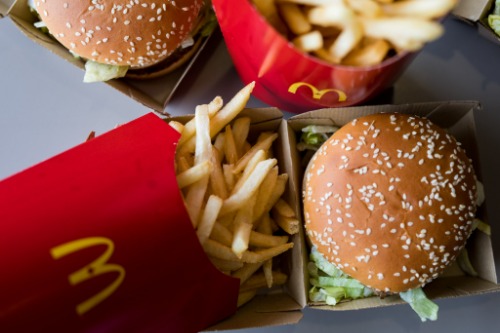
In America, “small” often means “still too much,” and “large” might as well be family-sized. Restaurants routinely serve portions that could feed two or three people. It’s not uncommon for locals to ask for a box before finishing even half their plate. While some see it as good value, others find it wasteful and excessive.
The tradition ties into ideas of abundance and hospitality, but it’s taken to extremes. Many Americans feel uncomfortable about the food waste and the pressure to “clean your plate.” The super-sized meals have also been linked to rising health issues like obesity. Even locals traveling abroad often find themselves shocked by how much smaller normal portions are elsewhere.
11. School Mascots That Are Questionable at Best
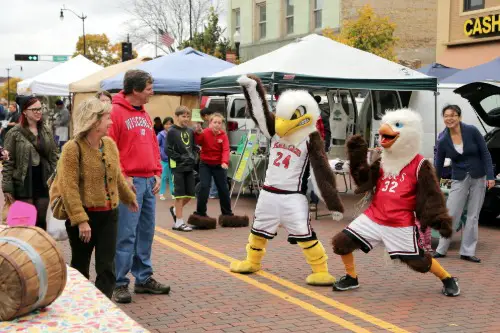
From cartoonish animals to culturally insensitive depictions of Native Americans, school mascots can be wildly outdated. Some are just bizarre—like the “Fighting Pickles” or the “Speedy Weasel”—but others are outright offensive. In recent years, there’s been a push to retire certain mascots, but resistance remains strong in many communities. That tension can feel deeply embarrassing to people who want progress but are stuck in tradition.
Mascots are supposed to build school spirit, but they often reveal outdated values or lack of cultural awareness. Debates over changing them have led to heated school board meetings and national headlines. Many locals wish their schools would just pick a neutral, unproblematic symbol already. Instead, they end up on cringe compilations online.
12. Thanksgiving Historical Whitewashing

Thanksgiving is celebrated as a time of gratitude and family, which is great in theory. But the traditional story taught in schools glosses over the violent history between settlers and Native Americans. Many Americans now feel conflicted about the holiday’s origin. It’s awkward to enjoy turkey and pie while ignoring centuries of displacement and genocide.
In recent years, some schools and communities have tried to reframe Thanksgiving to include Native perspectives. Others are pushing for alternatives like “National Day of Mourning.” Still, the sanitized version of the holiday persists in mainstream culture. Many locals feel embarrassed by how oversimplified and one-sided the tradition remains.
13. Excessive Patriotism at Sports Events

At almost every major American sporting event, there’s a moment for the national anthem, often followed by military flyovers. It’s meant to inspire unity, but for some, it feels like performative patriotism. The blending of sports, nationalism, and military promotion can be jarring—especially during NFL games where fighter jets roar overhead. Some Americans find it excessive and even alienating.
This tradition ramped up post-9/11, with teams receiving Department of Defense funding to include patriotic displays. What started as genuine support turned into a marketing tool. Critics argue that it overshadows the actual sport and pressures athletes into political performances. Even some veterans have questioned its authenticity.
14. The “Customer Is Always Right” Mentality

This age-old business motto has been taken way too literally in America. It often gives entitled customers a free pass to mistreat workers. Service employees are expected to smile through rudeness and unreasonable demands. Many locals cringe at how normalized this behavior has become.
The phrase was originally about improving service, not letting people throw tantrums over expired coupons. But it’s evolved into a power imbalance, especially in retail and food industries. Workers now share horror stories online under hashtags like #KarensGoneWild. A lot of Americans agree—it’s time to retire this tradition of customer worship.


